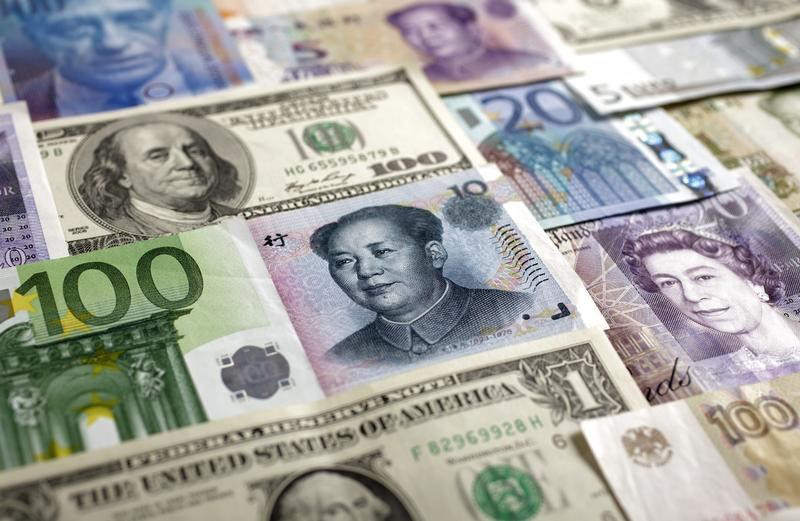Tuesday Apr 08, 2025
Tuesday Apr 08, 2025
Friday, 28 May 2021 00:53 - - {{hitsCtrl.values.hits}}

Central Bank has decided to revoke the limits set for short-term foreign currency borrowings for one year.
The previous limits as a percentage of total assets ranged from 1.5% (for banks with credit rating of BBB+ to BBB- or equivalent or Below BBB-) to 2.5% for banks with higher credit rating. Short-term means one year (remaining term of maturity).
The new move is whilst requiring banks to maintain the existing total foreign currency borrowing limit up to 10%. The latter is subject to banks ensuring through appropriate risk mitigation practices that such foreign currency borrowings do not give rise to any excessive forex risk. Banks are also required to inform the Central Bank prior to undertaking any borrowings.
The Central Bank said the new move is after considering the need to stimulate capital formation within the real economy and supplement foreign currency needs of the country.
Banks also have been asked to report their total foreign currency borrowings position at the end of each month within 15 working days starting from 30 June.
The latest stance by the Central Bank will encourage banks to tap more foreign sources to secure short-term funding which is easily available as opposed to long-term.
Some of the banks which had raised funds via foreign sources since last year include Bank of Ceylon, People›s Bank, National Savings Bank, Commercial Bank, Nations Trust Bank, Pan Asia Bank, Sanasa Development Bank etc. Commercial Bank and NDB managed to attract equity investment from abroad as well. Several finance companies too have raised funding from overseas.
“Banks have been regularly sourcing foreign funding both short and long-term. The removal of short-term limit is a big boost,” a senior banker told the Daily FT yesterday.
The relaxation will also help Sri Lanka enhance its forex reserves amidst the challenge of substantial foreign debt servicing and the COVID-19 pandemic.
As of end-April, gross official reserves were estimated at $ 4.5 billion, equivalent to 3.2 months of imports. This does not include the bilateral currency swap facility (worth 10 billion yuan) with the People’s Bank of China (PBoC).
Last year eight companies, mainly banks, had 16 listed debenture issues raising Rs. 22 billion, whilst in 2019, the amount raised was Rs. 58 billion. So far this year, several banks have opted for the same. Sampath Bank raised Rs. 6 billion in April, whilst Commercial Bank has announced a Rs. 10 billion debenture issue. Banks also rely on public deposits to boost their liquidity levels.
In 2020, despite the challenging business environment, off-balance sheet exposures reported a growth of 16.1% (Rs. 675.2 billion) compared to a negative growth of 5.3% (decrease of Rs. 233.5 billion) during 2019. The main increases during 2020 were in undrawn credit lines (Rs. 279.9 billion), FX exposures (Rs. 278.3 billion) and guarantees and bonds (Rs. 66.8 billion).
The net foreign currency exposure as a percentage of banks’ on-balance sheet foreign currency assets stood at 0.3% as at end-2020, decreasing from 1.1% at end-2019.
During 2020, on-balance sheet foreign currency assets increased mainly due to the increase in placements with banks and investments, while the increase in off-balance sheet assets was from forward purchases and other derivative products.
The increase in on-balance sheet foreign currency liabilities was attributed to the increase in customer deposits while the increase in off-balance sheet liabilities was mainly from forward sales.
In 2018, the limits were set based on the maximum outstanding amount of foreign currency borrowings obtained by a licensed bank shall be determined as a percentage of total assets as per the latest annual audited accounts or interim accounts certified by the External Auditor of the licensed bank.
The percentage of foreign currency borrowings of a licensed bank was based on the sum of scores assigned for each licensed bank based on the external long-term credit rating and the total capital adequacy ratio of the bank.
In its original November 2018 direction to set limits, the rationale was that though forex borrowings are an important source of funding for banks, excessive and unregulated foreign capital flows were likely to cause unwarranted macroeconomic and financial stability concerns.
At that time, the Monetary Board introduced a policy framework for foreign currency borrowings of licensed banks with the objectives of addressing the high dependence on foreign currency borrowings and the resulting exposure of licensed banks to foreign exchange risk and minimising the pressure on the reserves and exchange rate of the country arising from large borrowings in foreign currency.
In 2018, off-balance sheet exposures of banks grew significantly by 14.7% (Rs. 569.4 billion) compared to the growth of 5.3% (Rs. 194.6 billion) during 2017.
Undrawn credit lines accounted for the largest share of off-balance sheet exposures with a share of 27.8% at end-2018.
Foreign exchange (FX) exposures accounted for 32.5% of the total off-balance sheet exposure and was caused mainly by unsettled FX purchases (16.8%) and FX sales (15.7%).
The net foreign currency exposure as a percentage of banks› on-balance sheet foreign currency assets stood at 0.8% at end 2018. The banking sector reported a long foreign currency position of Rs. 11.7 billion in 2018 in comparison to a long position of Rs. 19.9 billion in 2017.